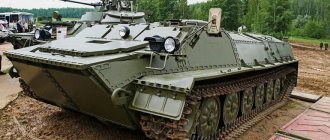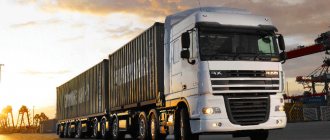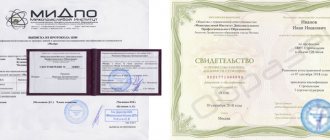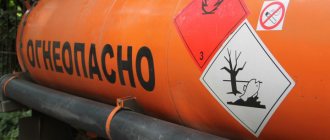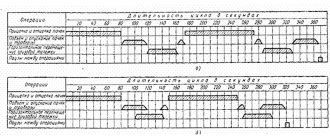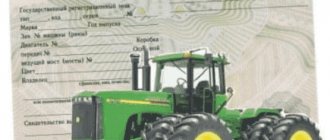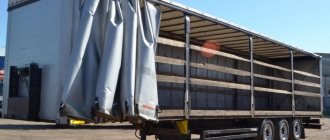Features of working on an aerial platform
Working on an aerial platform is a very important process that includes a lot of functions. Using the device, you can lift, for example, a builder with a set of tools or building materials to a certain height. If the building structure is quite complex, sometimes at the construction stage it is impossible to deliver material to a hard-to-reach place without lifting equipment.
The pace of development of the construction industry has been steadily increasing in recent years. Along with them, the need for specialized equipment is growing. This explains the profitability and demand for such a profession as working on an aerial platform.
With the help of specialized equipment, not only construction tasks of glazing or facade arrangement are solved. Operating an aerial platform is often necessary in an urban environment. For example, without special equipment it is difficult to imagine carrying out operations to install lights or air conditioners, or hang a stretched panoramic advertising sign at a great height.
An experienced aerial platform operator is familiar first-hand with such work as restoration (construction, repair) of facades of various structures and houses. Maintenance of air conditioners in multi-storey buildings is also a familiar type of service that requires the use of special equipment. Without lifting devices in high-rise buildings, it is sometimes impossible to glaze the balcony and install ebb sills. In addition, the auto-hydraulic lift is used for cleaning chimneys, carrying out repair operations on the roof, washing windows and insulating facades.
Requirements for candidates for the position of aerial platform operator
Safety rules, as already mentioned, play a very important role in each profession. Thus, the operator of a hydraulic lift must be at least eighteen years old and have undergone appropriate training. When joining any organization, he must provide a driver’s license for this type of technical device. Before carrying out independent processes, the operator undergoes a medical examination, which determines his suitability in terms of health and approves permission to work. The candidate for the position must also be trained in safe methods and techniques for carrying out work processes, and also be familiar with the occupational safety instructions and undergo direct training on the spot.
When a vacancy is advertised, a huge number of applicants apply. In the HR department of an organization, all candidates are carefully studied before giving preference to any particular one. For the position of aerial platform driver, factors such as general driving experience and experience working on an aerial lift are important. As a rule, a candidate is selected who has solid experience as a driver and the desired experience on a lift of at least five years. In this case, the more experience, the better. The exception is people of retirement age, whom many organizations simply do not want to hire.
The operator of an aerial platform and hydraulic aerial lift can choose suitable conditions for himself among the conditions presented on the labor market. The salary size, schedule, length of service in the profession, and location of work objects play a role here. The rotational method is often offered in variants with different travel times. The duration of some shifts can be calculated in weeks, others in months.
Be on top
Russian market of 18- and 22-meter hydraulic lifts
Automotive hydraulic lifts (AGH) are one of the most popular types of lifting equipment on the market. They are widely used in various areas of economic activity, when performing work at height - for lifting workers with materials and tools during repair and construction work, as well as for servicing buildings, structures and devices of the energy and utilities sector. The use of automobile chassis as a base makes the lifts very mobile, which is convenient for their prompt transfer to the site. The use of basic all-terrain chassis expands the scope of application, allowing the operation of lifting equipment in off-road conditions. The Russian market offers the widest range of AGPs, differing in lift height and base chassis - from 12-meter compacts based on the GAZelle to giants with a lift height of 100 meters or more on multi-axle special chassis.
Market Features
Over the past 15 years, significant changes have occurred in the Russian market of hydraulic vehicle lifts. In the first half of the 2000s, more than a dozen enterprises producing AGP operated in Russia. Most of these factories produced articulated lifts, developed during the Soviet period. For various reasons (some factories no longer exist, and others have changed their specialization), the production of AGP has been discontinued at the Krasnodar plant “Mekhpromstroy”, Lyudinovsky Machine-Building Plant, Stavropol Automobile Cranes Plant “KRAST”, Abakan Experimental Mechanical Plant, Magnitogorsk Plant “Remstroymash”, Nizhny Novgorod Machine-Building Plant plant, Podolsk plant “Stroytekhnika”, Nizhneturinsky machine-building plant “Venta”, Ulyanovsk mechanical plant No. 2. Before the crisis, the production volume of AGP at Russian enterprises was about 1,500 units per year. Supplies from Ukraine were significant: the Melitopol plant “Gidromash” exported several hundred AGPs per year to our country. In addition, “used” lifts (mainly from Japan) were very popular at that time, the annual import volume of which exceeded 1000 units.
Currently, the market situation is no longer what it used to be. The total volume does not exceed 1000 hydraulic lifts. Domestic factories that carry out the full cycle of AGP production - from design to the manufacture of metal structures and final assembly - can be counted on the fingers of one hand, and their production volumes, compared to the pre-crisis period, have decreased significantly. Of the “old guys”, only the Kazan Electromechanical Plant, the St. Petersburg Autohydrolift Plant and the Zavidovo Experimental Mechanical Plant are now in operation. The Torzhok Pozhtekhnika plant, which was one of the largest suppliers of auto-hydraulic lifts during the fat oil-dollar years, has now practically curtailed the AGP program for civilian use, focusing on its traditional products - fire fighting vehicles, including fire fighting lifts. However, new players took the place of the previous players.
A new trend that emerged in the second half of the 2000s is the installation of imported lifting equipment on chassis by Russian enterprises. Year after year, the number of such manufacturers grew more and more, and this process continues to this day. Moreover, not only foreign superstructures are used, but also domestic ones, as well as those supplied from neighboring countries. Among foreigners, the most popular among us are Italian and Korean AGPs. Until recently, Ukrainian lifts were supplied to us en masse from neighboring countries, but now their place has been taken by Belarusian equipment.
In a relatively short period from the moment foreign auto-hydraulic lifts began to be offered en masse in Russia, the vector of priorities among consumers very quickly began to tilt in their favor. In addition to such parameters as reliability and quality, imported lifts are compact and have low dead weight. Their construction uses high-strength steel, aluminum and plastic. The booms are multi-sectional, which makes the lift very maneuverable in the transport position. Cradles are made rotating. And if the most popular domestic AGPs with lifting heights of 18 and 22 m can only be installed on medium-tonnage chassis, then for foreign lifts with the same or even higher lifting heights, low-tonnage trucks such as the GAZelle and its analogues are quite suitable.
Of course, it cannot be said that domestic manufacturers of hydraulic lifts stand still and do not create anything new - and they have new models that surpass in their parameters the equipment created in previous years. An important step forward was the development of the production of telescopic lifts, replacing outdated articulated lifts. This design made it possible to significantly reduce the overall length of the AGP, as well as lower the center of gravity and improve the stability of the machine. A further development in the design of telescopic lifts was the use of booms that were shortened in the folded position by increasing the number of sections. Installing a cradle with a folding fence is another way to reduce dimensions, but in height. The introduction of a cradle rotation mechanism added another plus to the asset of domestic AGPs.
Despite the fact that all domestic AGP manufacturers have added more modern telescopic lifts to their production programs, models with an articulated boom have not yet been retired; a number of factories continue to produce them. The disadvantages of articulated lifts are more than compensated by their low cost, ease of operation, maintenance and repair.
18 and 22 meters
The most in demand on the Russian market are auto-hydraulic lifts with lifting heights of 18 and 22 m. They are very convenient for working in urban environments: they are compact, mobile and allow you to perform high-rise work on the majority of urban facilities. As a rule, available chassis of domestic medium-duty trucks are used as the basis for them, in the recent past - GAZ and ZIL. Currently, due to the liquidation of ZIL, lifting equipment is mounted mainly on GAZ chassis, less often on other brands of cars, including foreign ones. Some models of foreign 18- and 22-meter lifts are even installed on light-duty GAZelle trucks and the like.
AHPs with such a lifting height are widely used in city electrical networks, public utilities, construction, advertising services, rental companies, technical services of the State Traffic Inspectorate, etc. Almost all domestic manufacturers have 18- and 22-meter models in their lines. Let's talk about them in more detail.
Kazan Electromechanical Plant is the oldest domestic manufacturer, specializing in the production of car lifts since 1957. The company's model range includes several families of lifts in the height range under consideration. These are classic articulated 18- and 22-meter lifts of the VS-18 and VS-22 series, and telescopic models APT-18, PSS-131.22E, TA-18 and TA-22.
Articulated lift VS-22.02 on the chassis “GAZon NEXT”, KEMZ
The VS-18.04 model has the greatest reach of 6.8 m and a maximum cradle load capacity of 250 kg, the base chassis are GAZ-3309, GAZ-33086 and GAZon NEXT. Lifts of the VS-22 series are available in 2- and 3-arm versions. They have a maximum reach of 9.5 m, and the carrying capacity of the cradle is 250 kg. Chassis - GAZ, KAMAZ, Ural.
The APT-18 telescopic lift has a lifting height of 18 and a reach of 12 m. The load capacity of the cradle is 250 kg. Basic chassis – GAZ-3309, -33086, “GAZon NEXT”, including with a 2-row cab, KAMAZ-4308, -43253.
The telescopic lift PSS-13.122E is characterized by a lifting height of 22 m,
boom reach 12.25 m and cradle load capacity 250 kg. The PSS-131.22E(300) modification has a cradle rotatable by ±45° with increased geometric dimensions.
The most modern are telescopic lifts TA-18 and TA-22. The arrows for them are made in Germany from high-strength Swedish steel. The lifts are equipped with an advanced safety control and monitoring system, which allows the boom reach to be changed depending on the load in the cradle. Basic chassis – GAZ-3309, -33086, “GAZon NEXT”, incl. and with a 2-row cab.
Telescopic lift TA-22 on GAZ-3309 chassis, KEMZ
TA-18 and TA-22 have compact dimensions and reduced weight of attachments, provide a lifting height of 18 and 22 m, respectively, a maximum reach of 8.5 m with a load of 250 kg and a reach of 10 m with a load of 120 kg. The cradle is foldable aluminum. Proportional electro-hydraulic remote control (5 m long cable) provides the installation with smooth and accurate movement of the working platform in space. The lifts are equipped with an advanced control and monitoring safety system, which allows the boom radius to be changed depending on the load. To eliminate the possibility of damage, hydraulic hoses and electrical cables are mounted inside the boom. The GAZ and “GAZon NEXT” chassis are used as the base ones. All models of KEMZ auto-hydraulic lifts are equipped with an electrically insulated cradle, which allows servicing electrical installations with voltage up to 1000 V without turning it off.
The Autohydrolift plant is another enterprise in the industry that stood at the origins of the production of automobile lifts. The production of the first aerial platforms began here in 1950. The joint project of the Autohydrolift plant and the Tekhinkom company received its own MARS brand. As the manufacturer notes, MARS auto-hydraulic lifts are distinguished by advanced engineering and design solutions. In the height range under consideration, the 18-meter MARS/18 model on the GAZ-33088 chassis with a two-row cab is presented. With some stretch, this includes the 23-meter MARS/23 lift on the “GAZON NEXT” chassis with a two-row cabin.
Telescopic lift MARS/18 on the GAZ-33088 chassis, “Autohydraulic lift”
The main features of MARS lifts include a separate support circuit, compact overall dimensions, maximum functionality in the basic configuration, and unification of components. Hydraulic hoses and electrical cables are placed inside the booms to protect them from damage. As an option, a remote control panel is provided on the cable; a version with a radio-controlled remote control is possible. All lifts are equipped with an aluminum cradle with a rotation angle in the horizontal plane of ±90°.
Until recently, the Zavidovo Experimental Mechanical Plant
PSS-131.18E lifts with a lifting height of 18 m and a reach of 13 m are presented in modifications with a 3-section lattice-type boom, as well as with a 3-section and 4-section all-metal box-section boom. The modification with a 4-section boom is distinguished by a compact design and the presence of a cradle rotation function of ±45°.
Stair lift PSS-131.18E on the GAZon NEXT chassis, Zavidovsky EMZ
The 22-meter telescopic lift PSS 131.22E with a reach of 15.9 m is equipped with a 5-section boom. The use of such a boom made the vehicle very compact, which made it possible to attach this installation to the 2-axle KAMAZ and MAZ chassis, placing the lift boom behind the cabin so that the height dimensions do not significantly exceed the dimensions of the chassis vehicle.
Telescopic lift PSS 131.22E on the Ural-4320 chassis, Zavidovsky EMZ
All lifts have electrical protection up to 1000 V. Various available chassis of domestic and foreign production are used as base ones. Mainly medium-duty trucks GAZ, in addition, KAMAZ, Ural, MAZ, Mitsubishi Fuso, Isuzu NMR85H, Hyundai HD 78, Isuzu NMR85H.
At the turn of 2007-2008, the Chaika-Service automobile plant For more than 10 years of producing machines of this type, the company has managed to gain a foothold in the AGP market and seriously compete with the old cohort of domestic manufacturers, as well as take a leading position among the new wave of enterprises specializing in the installation of imported AGP on chassis.
Telescopic lift “Chaika Socage” T318 on the chassis “GAZelle NEXT”, “Chaika-Service”
“Chaika-Service” connects special add-ons to various chassis of domestic and foreign production, in turn modifying the chassis for installation of equipment. Due to the low weight (due to the use of high-strength steels) and the compactness of the AGP attachments with an average lifting height of 18-22 m, they can be installed not only on medium-tonnage trucks, but also on chassis with a total weight of 3.5 tons. Maximum reach on 18-meter trucks models reaches 13 m, on 22-meter ones - 15.5 m. According to the type of design, medium-height lifts are divided into telescopic with the boom located above the cabin (T series), telescopic with the boom located behind the cabin (T series) and lever-telescopic (DA series ). The lifts are equipped with an aluminum cradle with a load capacity of up to 300 kg with a cradle rotation mechanism. The cradle can be equipped with a 220 V socket for connecting power tools and an outlet for connecting pneumatic tools. Electrical insulation of the basket for 2000 V is included as standard. Domestic and foreign cars are used as base chassis.
Telescopic lift “Chaika Socage” T318 on Isuzu chassis, “Chaika-Service”
Telescopic lift AGP-18T on the Hyndai HD78 chassis, “RusKomTrans”
Commercial transport plant “RusKomTrans”
entered the hydraulic lift market in the second half of the 2000s and today produces lifts up to 75 m high. The production mainly uses lifting equipment from the Italian company CTE. Telescopic AGPs with a lifting height of 18 and 22 m are offered in two designs: a “cradle in the rear overhang”, which allows entry into the cradle in the transport position, and a “cradle above the cabin”, which retains the compact overall dimensions and maneuverability of the base vehicle. The maximum reach of 18-meter models is 13.5 m, 22.5-meter models are 10.6 m. The carrying capacity of the cradle is 300 kg. The chassis used is any domestic or foreign, with a total weight of 3.5 tons.
Among the distinctive features of CTE lifts are the use of high-strength steels, a rotating cradle with electrical insulation up to 1000 V and a column rotation of up to 390°. A 220 V socket and a pneumatic outlet can be installed in the working platform.
Telescopic lift AGP-22T on the GAZ-3308 chassis, “RusKomTrans”
“Auto-mechanical plant”
debuted on the AGP market in 2012. The company offers lifts with equipment from the Italian company Isoli, with different lifting heights and different boom configurations. AGPs are installed on chassis of domestic and foreign production with a total weight of 3.5 tons. Of the standard lifting height sizes discussed in our article, AMZ produces a 22-meter model AMZ IS7. It has a maximum reach of 11.3 m, the carrying capacity of the cradle is 250 kg. The cradle is made of aluminum and has insulation up to 1000 V, is equipped with a ±90° rotation function, and a 220 V socket is installed in the cradle to connect tools. The controls are electro-hydraulic. Column rotation angle is 550°.
Telescopic lift AMZ IS7 on Hino 300 chassis, “Automechanical Plant”
The emergence of new players in the domestic hydraulic lift market continues to this day. Moreover, these are not only companies specializing in installing third-party lifting equipment on chassis, but also enterprises that themselves develop and manufacture all the main components of the AGP.
Klintsovsky Truck Crane Plant , specializing in the production of truck cranes, has been actively diversifying its production in recent years. In 2022, the plant presented its first auto-hydraulic lift with a lifting height of 36 m, and last year - the 18-meter model AGP-18-2K “Klintsy”, which has been mass-produced since 2019. KAZ designers offered consumers exactly the configuration that is in the highest demand on the market - this is a telescopic boom with a working platform located above the cab in the transport position. The lift provides a lifting height of 18 m and a horizontal reach of 12 m. The column rotation angle is 360°. The working platform has a maximum load capacity of 300 kg. The function of rotating the working platform by ±90° ensures the most convenient location to the working surface, and the orientation system allows you to keep the floor of the working platform in a horizontal plane at any angle of inclination of the boom. The working platform is electrically insulated up to 1000 V. Almost any medium-tonnage vehicle can be used as a chassis - from a budget domestic LAWN to a foreign car.
Telescopic lift AGP-18-2K “Klintsy” on the GAZ-33086 chassis, Klintsy truck crane plant
Plant "Greenmash"
- another new name in the market of domestic hydraulic lifts. The company works together with the Tverstroymash plant, a well-known manufacturer of semi-trailer and trailed equipment. The Tver manufacturer debuted the most popular 18- and 22-meter auto-hydraulic lifts on the market. The metal structures of the lifts are entirely of our own production, made using high-strength Domex steel, which made it possible to reduce the weight of the superstructure while maintaining strength characteristics. The use of aluminum, from which the cradle is made, also contributes to reducing the weight of the lift. The PSS-131.18E model has a lifting height of 18 m, a reach of 9/13 m and a cradle load capacity of 300/120 kg. The second model - PSS-131.22E - is characterized by a lifting height of 22 m, a reach of 9/13 m and a cradle load capacity of 250/120 kg. The electrical insulation of the cradle is designed for voltages up to 1000 V. The basic chassis are “GAZon NEXT” and GAZ-3309 with a 1- and 2-row cab.
Telescopic lift PSS-131.18E on the chassis “GAZon NEXT”, “Greenmash”
Telescopic lift PSS-131.22E on the chassis “GAZon NEXT”, “Greenmash”
PALFINGER concern , the world's leading manufacturer of mobile lifting equipment, entered the Russian market several years ago with a new product - auto-hydraulic lifts. The manufacturer divides its lifts into 3 consumer segments - budget, medium and premium segments. Equipment in the mid-price segment is produced in Italy. Italian AGPs are supplied to Russia in the form of attachments and here they are mounted on the chassis, either mounted on the chassis or in the form of attachments. Premium segment lifts are produced in Germany and are supplied only complete, on a chassis, in a height range from 9 to 100 m. More affordable Italian lifts have found their niche in the Russian market. However, the line did not include such hits as 18 and 22 m; the closest standard sizes produced were 17 and 20 m. In this regard, in 2022, a new 18-meter model PALFINGER P180T was developed. Subsequently, the design of the lift was improved, and a pilot series was released in 2018. Since this year, this model has been mass-produced in Russia at the Velmash-S plant in Velikiye Luki, owned by an Austrian concern. Lifting equipment is designed and manufactured according to PALFINGER standards using high-quality components. The autohydraulic lift can be mounted on the chassis in two versions - “cradle above the cab” and “cradle in the rear overhang”. The carrying capacity of the cradle is 300/80 kg depending on the reach. The maximum reach is 10.7 m. The metal structures of the lift are made of high-strength steel. The cradle uses a reliable steel mechanism for horizontal rotation and a load limiting load cell instead of a mechanical one. A remote control is included as standard. This model is the first representative in the line of budget auto-hydraulic lifts from the PALFINGER concern and quickly became the brand’s bestseller in Russia.
The Luidor company , being a strategic partner of PALFINGER, installs PALFINGER P180T lifts on automobile chassis, primarily GAZon NEXT and GAZ-3308/3309. The installation of lifts on the chassis is carried out at the new Luidor-Tuning plant, equipped with modern technological equipment. The specialization of the new production is the production of special vehicles with hydraulic superstructures. In addition to PALFINGER auto-hydraulic lifts, the company also offers installation of lifting equipment from other manufacturers, depending on the customer’s budget - “VIPO”, Pinsk plant “SMM”, “Greenmash”, MARS.
Telescopic lift PALFINGER P180T, mounted on a GAZ-33088 chassis at the Luidor-Tuning plant
The mentioned Belarusian manufacturers “VIPO” and the Pinsk plant “SMM” have been actively gaining popularity in Russia in recent years. Lifting equipment produced by these enterprises is widely used by Russian companies that install AGP on chassis.
Telescopic lift PALFINGER P180T installed on the GAZON NEXT chassis by the Luidor-Tuning plant
Machine-building company “Vitebsk lifts” (“VIPO”)
- a manufacturer of
new wave of auto-hydraulic lifts - debuted on the Russian market in 2011. Without exaggeration, we can say that today it is the only manufacturer of auto-hydraulic lifts in the CIS that has conveyor assembly technology, with the ability to produce up to 45 machines per month. The most modern equipment is used in the production process. In the manufacture of metal structures, high-strength Domex steel with a yield strength of 700 MPa is used. The company has mastered a wide range of telescopic and lever-telescopic lifts, including the most popular 18- and 22-meter ones.
Stair lift VIPO-18-01 on the chassis “GAZon NEXT”, “Vitebsk lifts”
Lifts of the VIPO-18 series with a lifting height of 18 m are available in three versions - telescopic with a cradle located in the rear overhang; telescopic with a cradle located above the cabin; ladder, with a front cradle. The maximum reach of these lifts reaches 12.5 m. The carrying capacity of the cradle is: for telescopic ones - 300 kg, for stair lifts - 250 kg. 22-meter telescopic lifts of the VIPO-22 series are offered in two versions - with a cradle located in the rear overhang, and with a cradle located above the cabin. The boom radius on 22-meter models is 12 m, the carrying capacity of the cradle is no more than 300 kg. On telescopic AGP VIPO-18 and VIPO-22 it is possible to install a mechanism for rotating the cradle by ±90°. The base chassis used are GAZ, MAZ, KAMAZ, Hino, Hyundai and others.
Telescopic lift VIPO-18-01 on the MAZ-4371 chassis, “Vitebsk lifts”
Pinsk plant of small-scale mechanization equipment
produces auto-hydraulic lifts of the standard sizes under consideration - telescopic and articulated. These are the classics - articulated lifts VS-22 with a lifting height of 22 m. And more advanced 18- and 22-meter models PMS-318 and PMS-22 with an electroproportional control system, imported hydraulics and a mechanism for rotating the cradle ±45° (on PMS- 22). And 18-meter telescopic lifts VS-18T, as well as 22-meter articulated telescopic lifts VS-22T with electrically proportional control. In addition, cooperation has currently been established with the Italian company Oil&Steel, from which arrows are purchased. The plant produces its own support frame for lifts with purchased booms. In this version, telescopic lifts VS-18T-05 are produced with a cradle in the rear overhang, equipped with a ±90° rotation mechanism and an electroproportional control system. Optionally, all models of lifts can be equipped with a cradle with insulators for operation on power lines up to 1000V. The equipment is mounted on the chassis of GAZ, KAMAZ, MAZ, Ural, Hyundai, etc.
Telescopic lift VS-18T on the “GAZon NEXT” chassis, Pinsk plant “SMM”
Articulating-telescopic lift VS-22T on the GAZon NEXT chassis, Pinsk SMM plant
Vladimir Novoselov
photo of the author and manufacturing companies
Do I need a work permit when working in a cradle?
In accordance with paragraph 21 of the Labor Safety Rules when working at height, approved by Order of the Ministry of Labor and Social Protection of the Russian Federation dated March 28, 2014 No. 155n (as amended on June 17, 2015), the employer must approve the list of work before starting work at height. work at height, carried out with the issuance of a work permit, with the mandatory inclusion in it, in addition to the work specified in paragraph 11 of the Rules, of work at non-stationary workplaces.
If in the process of performing work in the cradle of an aerial platform there is a change in the height of the working area (non-stationary workplace), then in this case the registration of a work permit is mandatory, regardless of the permission group for work at height.
In the case of a stationary nature of work in the cradle of an aerial platform, the issuance of a permit is regulated by clause 115 of the Federal norms and rules in the field of industrial safety “Safety rules for hazardous production facilities that use lifting structures”, approved by Order of November 12, 2013 N 533 (as amended to April 12, 2016). In this case, the installation and operation of jib cranes, manipulator cranes, lifts (towers) at a distance of less than 30 m from the outermost wire of an overhead power line or an overhead electrical network with a voltage of more than 50 V is carried out only in accordance with a permit that determines safe working conditions.
Thus, to determine the need to issue a work permit, it is necessary to organize a preliminary analysis of the workplace.
Safety requirements upon completion of work.
4.1. After completing the work, remove the tools and accessories from the basket.
4.2. Remove tools, devices, protective equipment
4.3. Tidy up your workspace. Place tools and protective equipment in the designated place. Remove warning signs and barriers. Garbage, broken wires, etc. place in trash containers.
4.4. Put your overalls in order, remove dust and dirt, and take a shower.
4.5. Report all comments and defects identified during the working day to your supervisor or the head of the enterprise.
Instructions for labor protection when working from the cradle of the tower
General safety requirements
1.1. These instructions for the safe conduct of work for workers of the basket (cradle) located on the lift, establish the requirements for the safe conduct of work for workers of the cradle of lifts and are developed on the basis of the Rules for the design and safe operation of lifts, work projects and technological maps.
1.2. Persons at least 18 years of age who have no contraindications for health reasons and who have passed:
- induction training;
- fire safety instruction;
- initial training at the workplace;
- instructions on electrical safety in the workplace.
To perform work from the basket of a lift or aerial platform, persons who have a certificate for the right to work in the basket of an aerial platform and who do not have medical contraindications for this profession are allowed.
Admission to independent work must be formalized by order of the enterprise.
1.2. A worker of the aerial platform basket must go through:
- repeated instructions on occupational safety in the workplace at least every three months;
- unscheduled briefing: when changing the technological process or labor safety rules, replacing or upgrading a truck crane, accessories and tools, changing working conditions and organization, violating labor safety instructions, breaks in work for more than 60 calendar days (for work to who are subject to increased security requirements - 30 calendar days);
- dispensary medical examination in accordance with the order of the Ministry of Health of the Russian Federation No. 90 of March 14, 1996.
Repeated testing of workers' knowledge of the aerial platform basket is carried out by the qualification commission of the enterprise:
- periodically at least once every 12 months;
- when these persons move from one enterprise to another;
- at the request of the person responsible for the supervision of cranes at the enterprise or the inspector of Gosgortekhnadzor.
1.3. The worker of the aerial platform cradle is obliged to:
- comply with the internal labor regulations established at the enterprise;
- comply with the requirements of this instruction, instructions on fire safety measures, instructions on electrical safety;
- comply with the requirements for operating the aerial platform;
- Use the personal protective equipment provided for its intended purpose and take care of it.
- the established procedure for carrying out aerial work near power lines;
- techniques for releasing persons caught under voltage from the effects of current;
- Engineering and technical personnel for supervision, responsible for maintaining the aerial platform in good condition, persons responsible for the safe performance of work on the aerial platform.
- have a first aid kit, first aid, and primary fire extinguishing equipment on your car;
- perform only assigned work;
- while working, be attentive, do not be distracted or distract others, do not allow persons unrelated to work to enter the workplace;
- keep the workplace clean and tidy.
1.4. Aerial work cradles must know and observe the rules of personal hygiene. Eat, smoke, and rest only in specially designated rooms and places. Drink water only from specially designed installations.
1.5. If any malfunctions are detected in the aerial platform basket, attachments, tools or other deficiencies or hazards in the workplace, immediately stop the aerial platform. Only after eliminating the noticed deficiencies can you continue working on the aerial platform.
1.6. If a fire is detected or in the event of a fire:
- stop the aerial platform, turn off the ignition, turn off the taps of the gas pipeline and fuel and lubricants;
- start extinguishing using the available initial fire extinguishing means in accordance with the fire safety instructions. If there is a threat to life, leave the aerial platform.
1.7. In the event of an accident, provide first (pre-medical) aid to the victim, immediately report the incident to the foreman, take measures to preserve the situation of the incident (accident), if this does not create a danger to others.
1.8. For failure to comply with the safety requirements set out in these instructions, the working baskets of the aerial platform are liable in accordance with current legislation.
1.9. In accordance with the “Standards for the free issuance of personal protective equipment,” work baskets of aerial work platforms must be provided with cotton overalls (wearing period 12 months), combined mittens (wearing period 3 months); In winter, additionally a jacket with an insulating lining, cotton trousers with an insulating lining, and felt boots.
1.10. The main dangerous and harmful production factors are:
- moving and rotating parts and components of an aerial platform;
- work at height;.
- collision with another vehicle, machinery or hitting people;
- falling loads during lifting and unloading operations and their transportation.
Safety requirements before starting work
2.1. Make sure that it is in good condition and put on proper clothing, fastening it with all the buttons, tuck your hair under your headdress, as well as a helmet, safety belt, and goggles.
2.2. An external inspection together with the operator of the aerial platform will ensure that the basket, metal structures and other parts of the aerial platform are in good working order, as well as the reliability of the soil at the site where the aerial platform is to be operated.
- inspect the aerial platform mechanisms, their fastenings and brakes;
- check the serviceability of the fences;
- check the lubrication of mechanisms;
- inspect the metal structures in accessible places, the condition of the cradle and its serviceability.
2.3. After inspecting the aerial platform before putting it into operation, the operator, having made sure that the required approach dimensions are observed, is obliged to check all the mechanisms at idle speed and the serviceability of the operations: the mechanisms of the aerial platform, electrical equipment, instruments and safety devices, brakes and hydraulic systems.
2.4. If, during the inspection and inspection of the aerial platform, faults and deficiencies in its condition are discovered that impede safe operation, and if it is impossible to eliminate them on their own, the driver, without starting work, must inform the person responsible for the good condition of the aerial platform.
2.5. Before starting work, the operator of the aerial platform and work baskets must ensure that the workplace is sufficiently illuminated;
- check the condition of the site;
- make sure that there is no power line at the work site or that it is located at a distance of more than 30 m;
- obtain a permit to operate the crane at a distance closer than 30 m.
2.6. Before entering the cradle, the cradle worker must ensure the following:
- the lift is correctly installed on the platform and on all supports;
- there are no strangers in the lift operating area;
- the distance from the outer supports corresponds to the values specified in the Rules for the Construction and Safe Operation of Towers;
- when installing the lift in a power transmission area, the lift cradle does not touch the power line wires;
- when installing a lift near a building, the distance between them and the turntable is at least 1 m.
Safety requirements during operation
3.1. During operation of the aerial platform mechanisms, the cradle worker is obliged to:
- enter and exit the cradle only through the landing platforms, when the lift is completely stopped in the “Landing” position; when the lift is operating, the entrance to the cradle must be protected by a removable fence or a locking door;
- do not sit or stand on the railing of the cradle, do not hang over the railing, carefully watch the upper and side obstacles;
- do not place objects on the floor of the cradle to increase the work area;
- ensure that the weight of the load in the cradle does not exceed the rated lifting capacity of the lift;
- work at a safe distance of at least 0.5 m and without additional loads on the boom knee;
- work in sufficient lighting;
- monitor safe movement and, in case of danger, signal the driver or stop the engine from the control panel installed in the cradle;
- work only with permission when installing the lift at a distance of less than 30 m from the maximum protruding part of the boom to the outermost wire of the power line;
- do not throw tools and loads from the cradle, which is at a height;
- Do not move from one place to another on a lift unless this is provided in the operating manual.
Safety requirements in emergency situations
4.1. If the aerial platform loses stability (ground subsidence), the operator must stop lifting, give a warning signal, lower the cradle to the ground and determine the cause of the emergency.
4.2. If the elements of the lift are energized, the driver must warn workers about the danger and move the cradle away from the electrical wires, and if necessary, leave the cabin.
4.3. If during work a worker touches live parts of electrical equipment, the lift operator must first of all take measures to free him from the current, observing personal precautions.
4.4. Stop work if safety devices are faulty (limit load limiter, limit switches, tracking system for cradle orientation in a horizontal position)
4.5. Do not work during thunderstorms, rain, fog and snowfall that impede visibility, as well as at ambient temperatures below those specified in the lift passport.
4.6. If a fire occurs on the lift, the operator is obliged to immediately stop the operation of the crane and begin to extinguish it with primary fire extinguishing agents.
2.Safety requirements before starting work.
2.1. Make sure that the tool and protective equipment are in good working order.
2.2. Receive instructions from the work manager about the upcoming work.
2.3. Require the driver of the car lift to carry out all checks before lifting and installing the hovercraft on a level surface. The slope of the site should not exceed 3o.
2.4. Use the plumb line on the telescope to ensure that the telescope is installed vertically.
2.5. It is PROHIBITED to work from the car lift basket onto the unpositioned side supports of the UT-9 crane. The sides outside the support are installed by the driver of the car lift.
2.6. It is PROHIBITED to work in the car lift basket when the wind speed is more than 10 m/s, as well as during thunderstorms, ice, sleet, and fog. To visually assess wind strength, you should use a scale. The Beaufort scale for visually assessing wind strength is given in table. 1.
Table No. 1
| Wind power in ball. | Verbal notation | Wind speed m/sec. | Signs for determining wind strength |
| 5 | Fresh breeze | 8,0 – 10,7(9) | Branches and thin tree trunks sway. Large flags are being pulled out. |
| 6 | Strong wind | 10,8 – 13,8 (12) | Thick branches of trees sway, the forest rustles, tall grass and crops fall to the ground at times. Telegraph wires hum. |
| 7 | strong wind | 13,9 – 17,1 (15) | Tree trunks sway, large branches and twigs bend. Walking against the wind is noticeably difficult. You can hear the wind whistling near buildings and stationary objects. |
| 8 | Very strong wind | 17,2 – 20,7 (19) | Large trees sway, thin branches and dry twigs break. Movement against the wind is noticeably delayed. The sound of breaking waves on the coasts of large lakes and seas can be heard over a considerable distance. |
